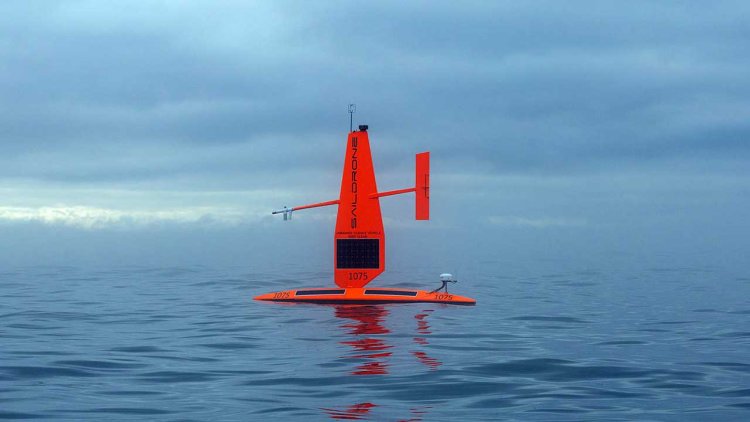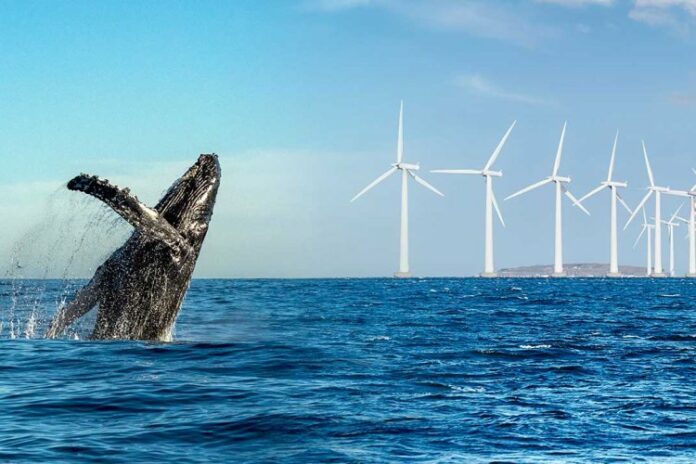Saildrone together with RPS have announced the completion of the first phase of a project to create a monitoring network to detect, classify, and localize marine mammals.
As the demand for clean energy continues to grow, offshore wind farms are becoming increasingly common. However, the construction and operation of these farms can impact marine ecosystems. Many large whale species are highly dependent on acoustics to conduct important life functions and, therefore, sensitive to underwater noise.
Traditional visual and acoustic methods for monitoring marine mammals require trained biologists to be deployed offshore on crewed vessels. Whale vocalizations are often very low frequency, making them difficult to detect and easily masked by man-made sounds.
Two Saildrone USVs equipped with proprietary underwater acoustic systems were deployed off the coast of Massachusetts to listen for North Atlantic right whales and other marine mammals. The virtually silent saildrones were stationed in an area where several species of whales are known to be present. During the two-week deployment, the saildrones recorded numerous marine mammal vocalizations.
Now, RPS’s acoustic scientists have the exciting task of post-processing the data collected by Saildrone, identifying the types of calls detected and the species producing those calls. One of the tools that the analysts will use is RPS’s machine learning tool, Neptune, a predictive algorithm for accurate, reliable detection of marine mammal vocalizations.

Stephanie Milne, RPS Team Leader, US Offshore Renewables, said:
“The global development of offshore wind is key to moving away from traditional, non-renewable power generation, especially fossil fuels. But development must not negatively impact the marine mammals that share the habitat. Saildrone and RPS are working together to provide a unique, flexible, and adaptable solution to marine mammal monitoring of large areas over significant time periods, using smart tools to reduce personnel in the field but without decreasing the monitoring and mitigation provided to protect our marine animal neighbors.”
Saildrone and RPS aim to minimize the impact of industrial activities on marine mammal populations while supporting the expansion of renewable energy sources. The advanced acoustic sensors Saildrone has developed, combined with RPS’s AI, will detect and monitor the presence of whales in real time, allowing for proactive measures to be taken.
Saildrone CTO Brian Hernacki said:
“Saildrone’s passive acoustic technology allows us to gather vital information in a non-invasive and cost-effective manner, and combined with the mobility and endurance of our uncrewed platforms, provides unprecedented monitoring capability, facilitating research, conservation, and commercial enterprise.”
The project is supported by a significant award from the National Offshore Wind Research and Development Consortium (NOWRDC) to facilitate offshore wind’s coexistence with wildlife and other ocean users and support other industry initiatives.
“NOWRDC is excited to award projects that directly respond to challenges in the offshore wind industry,” said Lyndie Hice-Dunton, executive director of NOWRDC. “As we approach the deployment of commercial-scale offshore wind in the US, these projects have the potential to provide real solutions to near-term industry challenges—ranging from stakeholder coordination to transmission resiliency. By harnessing the power of technology and innovation, we can strike a balance between sustainable economic development and the preservation of our fragile ecosystems.”



